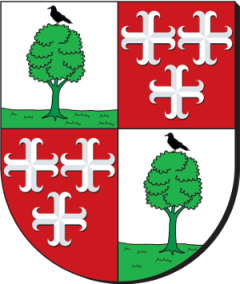On the morning of Mad Tuesday, 5 September 1944, Marie Antheunis left her sister’s house in Terneuzen by bicycle and headed for Axel, a Protestant town in the border region between the Netherlands and Belgium, because she wanted to be with her 11-year-old son. She never arrived. Instead, she was arrested together with Debora van Es, whom she did not know, imprisoned, tortured and raped by members of the resistance who were now united in the Order Service. After that, the two women disappeared without a trace. It was not until February 1946 that their remains were exhumed on Big Island, an estate between Axel and Hulst, which became nationally notorious at the end of 1944 as an internment camp for Dutch people who had collaborated with the enemy. The murder case received national media attention and, as recently as 1988, VPRO radio devoted an episode of Het Spoor Terug (The Trace Back) to it.
The case is also almost always cited in recent literature on World War II, but unfortunately, no serious investigation into the events has ever been conducted. Now, eighty years later, this reconstruction reveals who (presumably) murdered the two women, who was responsible, and why. To this end, the publication focuses on the Marie Antheunis case. The events surrounding her tragic end and the cover-up that was intended to keep everything hidden at the national level delve deep into the world of the resistance, the post-war Military Authority and the post-war reckoning with (allegedly) traitorous Dutch citizens.
This drama about the Catholic Antheunis family of entrepreneurs in a Protestant town provides a unique insight into a society in transition around the rural border of the Netherlands with metropolitan and industrialised Belgium after 1900. But what at first glance appears to be local history turns out to be national and international history through all those involved. Life in the rural community along the Dutch-Belgian border was intertwined with the major events in Europe and the rest of the world during the violent first half of the twentieth century. The fate of two innocently murdered women was suppressed from the public eye after 1946, becoming a public secret.
The authors bring their very different backgrounds, knowledge and experience together in the book. Amar Antheunis (1940) is a cousin of one of the two murdered women, has access to a family archive, and has extensive knowledge of the region. After his career as an architect, he completed a degree in cultural studies at the Open University in 2018. Arjan van Dixhoorn (1973) is a historian affiliated with the University College Roosevelt of Utrecht University in Middelburg. He has extensive experience in archival research and specialises in the history of Zeeland, and also comes from the region.
Additional information
The book is based on research of material from many archives and libraries in the Netherlands and abroad (with references in footnotes), with additional information from a series of interviews with surviving primary or secondary witnesses. It is richly illustrated with portraits of the main characters and locations, many of which are from the Antheunis family archive. With its colourful details about daily life, unadorned writing style and who-dunnit character, it is intended for a generally educated, non-specialised readership.
The publication of the book more or less coincides with the disclosure on the internet of the files of the Special Court in the National Archives. This book is largely based on several of those files and demonstrates their importance, but also how carefully they must be handled in seeking the truth. The manuscript has been commented on and edited by various external readers (local experts, Dutch language specialists and general readers). It is divided into two parts with a total of fifteen chapters, a foreword and a conclusion, and contains 164,369 words.
About the authors
Amar Antheunis (Axel, 1940) studied architecture at the St. Joost art academy in Breda, specialising in interior architecture. From 1974 to 2010, he ran an architectural firm with commissions for both new construction and renovation, ranging from homes to office buildings. After his retirement, he pursued a master’s degree in cultural studies at the Open University in Heerlen, where he graduated in 2018 with a master’s thesis entitled ‘Dutch volunteers in the Spanish Civil War. Fools or heroes?’. He is a first cousin of Marie Antheunis.
Arjan van Dixhoorn (Terneuzen, 1973) worked as a historian at universities in the Netherlands and Belgium. He received various scholarships and awards. In 2013, he co-founded the Young Academy of Belgium. From 2013 to 2022, he held the Hurgronje Chair in “History of Zeeland in the World” at Utrecht University. He has published on (early modern) Dutch, Belgian and European cultural history. Since 2013, he has been teaching (world) history at the international University College Roosevelt in Middelburg. For a list of publications, see: https://www.ucr.nl/academics/academic-program/faculty/academic-staff/dr-arjan-van-dixhoorn/
The Hurgronje Family Fund has made a financial contribution to the realisation of this publication.

0 comments